|
South Sulawesi (Indonesian: Sulawesi Selatan) is a province in the southern peninsula of Sulawesi. The Selayar Islands archipelago is also part of the province. |
|---|
Geography
South Sulawesi is located at 4°20'S 120°15'E and covers an area of 45,764.53 square kilometres. The province is bordered by Central Sulawesi and West Sulawesi to the north, the Gulf of Bone and Southeast Sulawesi to the east, Makassar Strait to the west, and Flores Sea to the south.Administrative divisions
Five years after independence, the government issued Law No. 21 of 1950, which became the basis of the legal establishment for the Sulawesi province. Ten years later, the government passed Law No. 47 of 1960 which endorsed the formation of the South/Southeast Sulawesi province. Four years after that, with Act No. 13 of 1964, the provinces of South Sulawesi and Southeast Sulawesi were separated.Forty years later, the South Sulawesi government was split into two, with the regencies of Majene, Mamasa, Mamuju, North Mamuju, and Polewali Mandar were separated off into a new West Sulawesi province on 5 October 2004 under Act No. 26 of 2004.
The remaining South Sulawesi Province is divided into 21 regencies and three independent cities, listed below with their (provisional) populations as of the 2010 Census.
South Sulawesi has a diverse range of ethnic groups. These are the main three:
- The Buginese (suku Bugis) are the largest ethnic group in South Sulawesi. These people inhabit the middle of the southern peninsula of South Sulawesi. Many of these people have migrated to the outer islands around Sulawesi, even as far as Malaysia.
- The Makassarese (suku Makassar) are the second largest ethnic group in South Sulawesi. Their language is Makassar. Makassar people inhabit the southern part of the southern peninsula of South Sulawesi including the Jeneponto, Takalar, Bulukumba, Bantaeng, Gowa, Maros, and Makassar. The total population is around 3 million people.
- The Torajan (suku Toraja) are the indigenous ethnic group which inhabits the mountainous region of South Sulawesi. Their population is approximately 650,000, 450,000 of which still live in the regency of Tana Toraja ("Land of Toraja").
Language
There are various languages and dialects spoken in South Sulawesi. Majority of them belongs to Malayo-Polynesian branch of Austronesian languages. Below is the list of major languages spoken in the province.- Makassarese language is a language spoken in Makassar and surrounding areas. It has a total of 2.1 million speakers.
- Bugis language is one of the languages spoken in the region up to Pinrang Bone. This language is the predominant language used by many communities in South Sulawesi. It is natively spoken by around 5 million people and plus 500,000 second language speakers. Making it one of the most widely spoken language in both South Sulawesi and the island of Sulawesi.
- Tae' language is mostly spoken in Tana Luwu. It has 1 million native speakers.
- Toraja language is the native language Tana Toraja. It has a total of 750,000 speakers.
- Mandar language is the language of the Mandar people, that lives in the West Sulawesi province, especially in Mamuju, Polewali Mandar, Majene and North Mamuju Regencies. In addition to the core in the tribal areas, they are also scattered in coastal parts of South Sulawesi, South Kalimantan, and East Kalimantan. It is spoken by around 400,000 people.
- Duri language is a language spoken in the north of Mount Bambapuang, Enrekang and into the border of Tana Toraja. There are an estimated around 130,000 native speakers. It is the prestige variety of Masenrempulu languages.
- Konjo language is divided into two groups, the Coastal Konjo and the Mountain Konjo language. The Coastal Konjo live in coastal areas, notably the Bulukumba area, in the southeastern corner of the southern part of the island of Sulawesi. The Mountain Konjo live in the mountains of southeastern Sulawesi, around Bawakaraen. It has a total of almost 300,000 native speakers.
- The Human Development Index (HDI) for South Sulawesi in 2008 reached 70.22.
- Life expectancy was 69.60 in 2008.
- Poor population was at 12.31 percent in 2009, amounting to 963.6 thousand persons.
- There was an unemployment rate of 8.90 percent in 2009, amounting to 296,559 people.
Religion
The main religion in South Sulawesi is Islam at 89.62% (7,200,938). Other major religions include Protestantism 7.62% (612,751), Roman Catholicism 1.54% (124,255), Buddhism 0.24% (19,867), Hinduism 0.72% (58,393), and Confucianism 0.004% (367).[5]History
A village in South Sulawesi 1929
During the golden era of the spice trade, from the 15th to 19th centuries, South Sulawesi served as the gateway to the Maluku Islands.
At around the 14th century in South Sulawesi there were a number of small kingdoms, including two prominent ones, the Kingdom of Gowa near Makassar and the Bugis kingdom located in Bone. In 1530, the kingdom of Gowa began development and in the mid 16th century, Gowa become one of the most important trade centers in eastern Indonesia. In 1605, the King of Gowa embraced Islam and made the kingdom of Gowa Islamist and between the years 1608 and 1611, the Kingdom of Gowa conquered the kingdom of Bugis so that Islam could be spread to the regions of Makassar and Bone.
Regent of Maros, Makassar, Sulawesi
A Bugis queen later emerged to lead the resistance against the Dutch, who were busy dealing with the Napoleonic Wars in Europe. Yet once past the Napoleonic Wars, the Dutch returned to South Sulawesi and eradicated the queen's rebellion. But resistance of the Bugis people against colonial rule continued until 1905. In 1905, the Dutch also managed to conquer Tana Toraja.
Mangi Mangi Karaeng Bontonompo, king of Gowa, with the public and some
dignitaries during the installation of acting governor of Celebes and dependencies, Mr. Bosselaar, 1937
Economy
The Sulawesi economy grew 7.78 percent in 2008 and grew by 6.20 percent in 2009. Economic Growth in the First Quarter of 2010 reached 7.77 percent. The GDP in 2009 (ADHK) amounted to Rp 47.31 trillion and 99.90 Trillion (ADHB). There was a per capita income of USD 12.63 million in 2009.Transportation
Airports
- Sultan Hasanuddin International Airport (Makassar)
- Lagaligo Airport (Luwu, Palopo)
- Andi Djemma Airport (North Luwu)
- Pontiku Airport (Tana Toraja)
- Haji Aroepala Airport (Selayar)
- Seko Airport (North Luwu)
- Rampi Airport (North Luwu)
- Sorowako Airport (East Luwu)
- Mappalo Ulaweng Airport (Bone)
Ports
- Port of Soekarno Hatta (Makassar)
- Port of Tanjung Ringgit (Palopo)
- Port of Nusantara, (Pare Pare)
- Balantang, (Malili)
- Biringkassi, (Pangkep)
- Paotere, (Makassar)
- Pamatata (Selayar)
- Bajoe, (Watampone)
- Garongkong (Barru)
- Bira, (Bulukumba)
- Bangsalae, (Siwa, Wajo)
- Ulo-ulo, (Belopa, Luwu)
- Lala ria,(sinjai)
Natural resources
Salt evaporation ponds in Jeneponto, South Sulawesi
Food
In addition to corn, the South Sulawesi region also produces cassavas, sweet potatoes, green beans, peanuts. and soybeans. Some luxuries such as hybrid coconuts, cocoa, coffee, pepper, vanilla, tea, cashews, and cotton are also produced.
Annona squamosa in Bulukumba, South Sulawesi
Catch of the day, Port of Bira, Bulukumba, South Sulawesi
Mining
One of the factors that contributes to the high GRDP of South Sulawesi is the mining sector. Gold, magnesium, iron, granite, lead, nickel, and stone products are mined.
Mountains in South Sulawesi
Culture
Philosophy
Culture Siri 'Na Pacce is one cultural philosophy of the Bugis-Makassar Society which must be upheld. If one is a siri 'na pacce (not a person), then that person doesn't exceed the behavior of animals, because it has no sense of shame, self-esteem, and social concerns. The people of Bugis-Makassar, they teach morality in the form of advice about decency, prohibition, and the rights and obligations that dominate human action to preserve and defend himself and his honor. They have a very strong relationship with the view of Islam in terms of spirituality, where the strength of the soul can conquer the body. The core concept of siri 'na pacce covers all aspects of community life and is the identity of the Bugis-Makassar.- Siri 'Nipakasiri' occurs when someone insulted or treated someone outside the boundaries of reasonableness. Then he or his family had to enforce siri'nya to restore the honour that has been deprived of, if not it would be called "mate siri" or dead status and dignity as human beings. The Bugis and Makassar, would rather die than live without siri '.
- Siri 'Masiri' is a way of life that intends to maintain, improve, or achieve a feat performed by earnest and hard.
Traditional costume
Baju bodo is the traditional costume of the women. Baju bodo is rectangular and is usually short sleeved. According to customs, every color of the clothes worn by women shows the age or the dignity of the wearer. Clothing is often used for ceremonies such as weddings. But now, baju bodo is worn in other events such as dance competitions or to welcome guests.Traditional ship
The pinisi or phinisi is a traditional Indonesian two-masted sailing ship. It was mainly built by the Konjo tribe, a sub-ethnic group but was, and still is used widely by the Buginese and Makassarese, mostly for inter-insular transportation, cargo, and fishing purposes within the Indonesian archipelago.The hull of the ships looks similar to that of a dhow while the fore-and-aft rigging is similar to that of western schooners, although it might be more correctly termed to resemble a ketch, as the front mast is the larger. The large mainsails differ from western style gaff rigs though, as they often do not have a boom and the sail is not lowered with the gaff. Instead it is reefed towards the mast, much like a curtain, thus allowing the gaff to be used as deck crane in the harbor. The lower part of the mast itself may resemble a tripod or is made of two poles. Pinisi may be 20 to 35 meters long and can weigh up to 350 tons. The masts may be as high as30 meters above the deck.
Traditional houses
South Sulawesi has three types of traditional houses. The most known are the Bola from Bugis Makassar and the Tongkonan from Toraja.
Tamalate Palace of Gowa Sultanate
- Bola Traditional House Some of the considerations for the building of the house are should it face the sunrise, overlook a plateau, or overlook a cardinal direction.
Tongkonan House from Toraja in Ke'te' Kesu', Toraja Regency
- Tongkonan is the traditional ancestral house, or rumah adat of the Torajan people. Tongkonan have a distinguishing boat-shaped and oversized saddleback roof. Like most of Indonesia's Austronesian-based traditional architecture, tongkonan are built on piles. The construction of a tongkonan is laborious work and it is usually built with the help of all of one's family members. In the original Toraja society, only nobles had the right to build tongkonan while commoners lived in smaller and less decorated homes called banua.
Traditional songs
Makassar Traditional Songs (Kelong)
|
Bugis Traditional Songs (Dendang)
|
Traditional food
Coto Makassar
Coastal areas of South Sulawesi eat Bolu (milkfish), Shrimp, Sunu (grouper), and Crab.
In South Sulawesi, the traditional food is diverse, ranging from soup to traditional cakes. This is a chart with some of the traditional food of South Sulawesi:
|
|
|
Traditional weapons
A badik or badek is a knife or dagger developed by the Bugis and Makassar people of southern Sulawesi, Indonesia.
- Badik A badik is a knife with a specific form developed by the Bugis and Makassar. The Badik is sharp, single or double sided, and has a length of about half a meter. Like with a kris, the blade shape is asymmetric and often decorated with prestige. However, different from the kris, the badik never had a ganja (buffer strip). Some versions from Sulawesi are decorated with inlaid gold figure on the blade called jeko. The handle is made of wood, horn or ivory in a shape of a pistol grip at a 45° to 90° angle and is often decorated with carvings. From Sulawesi, the badik soon spread to neighbouring islands like Java, Borneo, Sumatra, and as far as the Malay Peninsula, creating a wide variety of badik according to each region and ethic group.




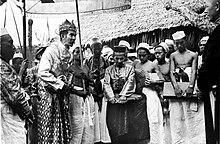
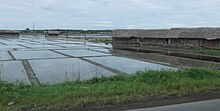


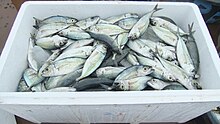



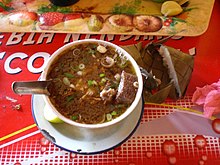


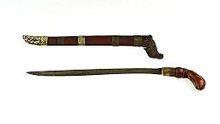




0 komentar:
Posting Komentar